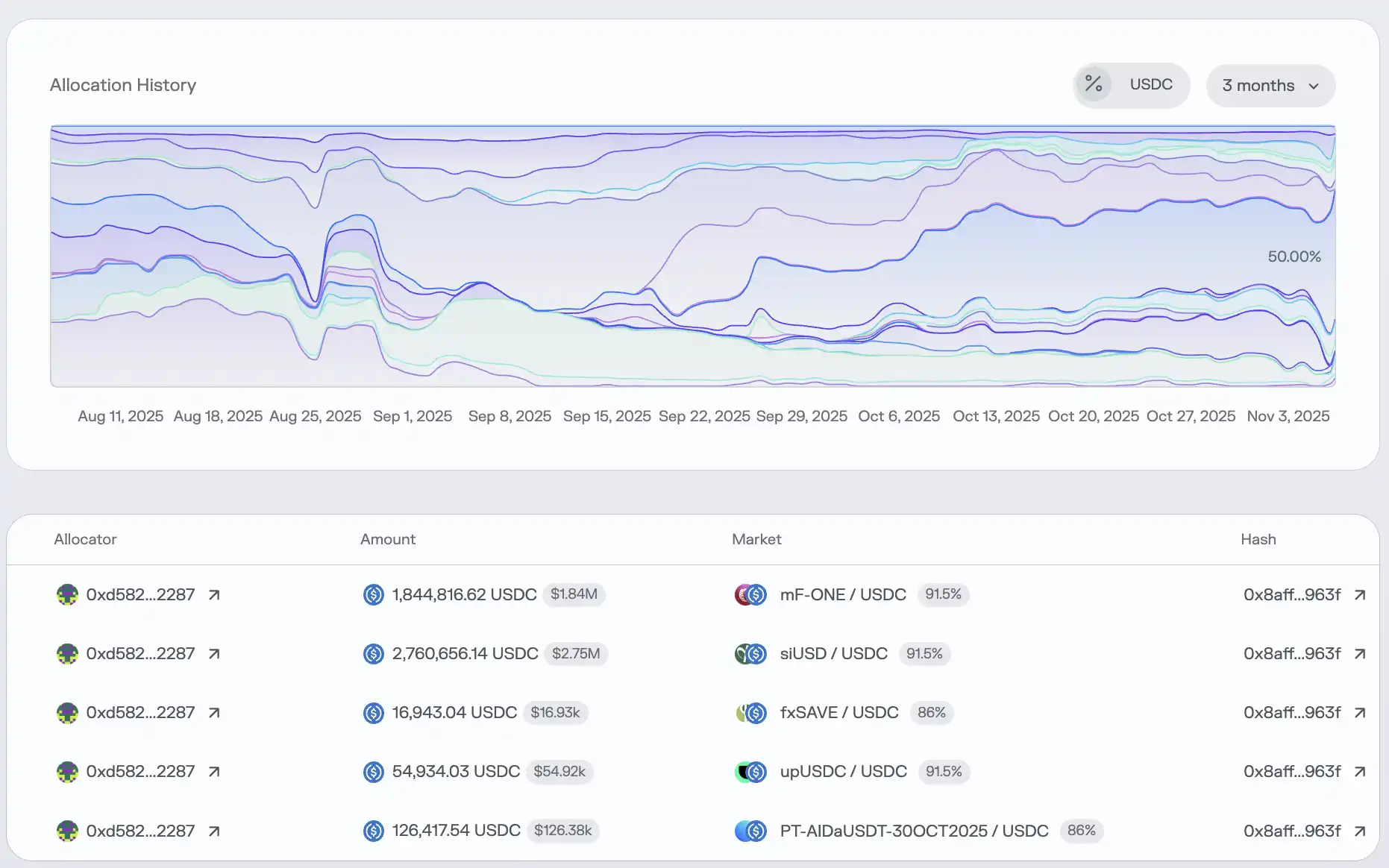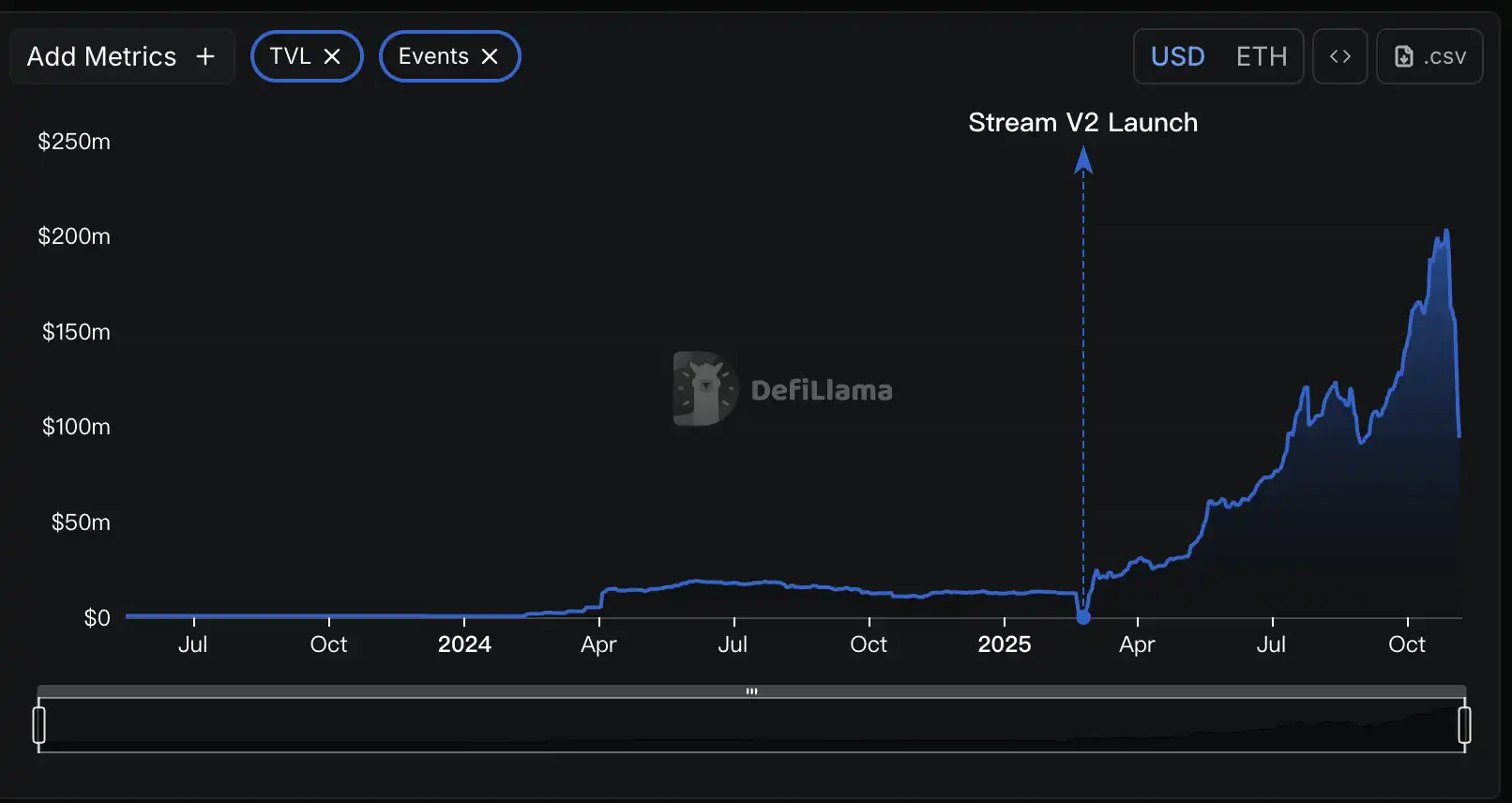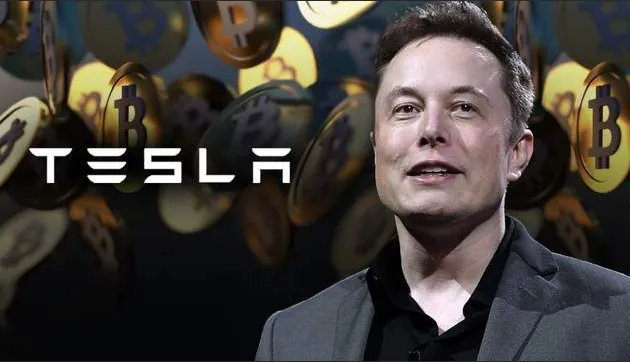Written by: EeeVee, SpecialistXBT
Fund managers, a role once trusted and later disenchanted in the stock market, carried the wealth dreams of countless retail investors during the booming period of A-shares. Initially, everyone was enamored with fund managers who graduated from prestigious schools and had impressive resumes, believing that funds were a less risky and more professional alternative to direct stock trading.
However, when the market fell, investors realized that so-called "professionalism" could not combat systemic risks. Worse still, while they earned management fees and performance bonuses, profits were their own merit, but losses were borne by the investors.
Now, when the role of "fund manager" arrives on-chain under the new name "Curator" (external manager), the situation becomes even more dangerous.
They do not need to pass any qualification exams, undergo any regulatory scrutiny, or even disclose their true identities.
All they need to do is create a "vault" on a DeFi protocol, using outrageously high annualized returns as bait to attract hundreds of millions of dollars in funds. And where this money goes and what it is used for remains unknown to the investors.
$93 million evaporated
On November 3, 2025, when Stream Finance suddenly announced the suspension of all deposits and withdrawals, a storm swept through the DeFi world.
The next day, the official statement revealed that an external fund manager had been liquidated during the market's severe fluctuations on October 11, resulting in approximately $93 million in fund asset losses. The price of Stream's internal stablecoin xUSD plummeted, crashing from $1 to a low of $0.43 within just a few hours.
This storm was not without warning. As early as 172 days prior, Yearn's core developer Schlag had warned the Stream team. At the eye of the storm, he bluntly stated:
"Just a single conversation with them and a 5-minute browse of their Debank would make it clear that this would end badly."

Conversation between Yearn Finance and Stream Finance
Stream Finance is essentially a yield aggregation DeFi protocol that allows users to deposit funds into vaults managed by so-called Curators to earn returns. The protocol claims to diversify investments across various on-chain and off-chain strategies to generate profits.
This collapse was caused by two main reasons: First, external Curators used user funds for opaque off-chain trading, and their positions were liquidated on October 11.
Second, on-chain analysts further discovered that Stream Finance also engaged in recursive lending with Elixir's deUSD, leveraging a small amount of real capital to amplify their leverage several times. This "left foot stepping on the right foot" model, while not the direct cause of the losses, significantly amplified the systemic risks of the protocol and set the stage for subsequent chain reactions.
These two issues combined led to a catastrophic chain reaction: $160 million of user funds were frozen, the entire ecosystem faced $285 million in systemic risk, Euler protocol generated $137 million in bad debts, and 65% of Elixir's deUSD was backed by Stream assets, with $68 million hanging on the brink of collapse.
So, what exactly is this "Curator" model that seasoned developers can see through at a glance yet still attracted over $8 billion in funds? How did it gradually push DeFi from the ideal of transparency and trustworthiness into today's systemic crisis?
The Fatal Transformation of DeFi
To understand the root of this crisis, we must return to the origins of DeFi.
Traditional DeFi protocols represented by Aave and Compound are fundamentally appealing because of the principle of "Code is law." Every deposit and every loan must adhere to the rules written in smart contracts, which are public, transparent, and immutable. Users deposit funds into a large public pool, and borrowers must provide over-collateralization to borrow funds.
The entire process is algorithm-driven, with no human manager intervention. Risks are systemic and calculable, such as smart contract vulnerabilities or liquidation risks under extreme market conditions, but not the human risks posed by a "fund manager."
However, in this cycle, a new generation of DeFi protocols represented by Morpho and Euler, in pursuit of yield, implemented a new type of fund management approach. They believed that Aave's public pool model was inefficient, with a large amount of capital idling and unable to maximize returns.
Thus, they introduced the Curator model. Users no longer deposit money into a unified pool but choose individual "vaults" managed by Curators. Users deposit money into the vaults, and the Curator is fully responsible for how to invest and generate returns with that money.
The expansion of this model has been astonishing. According to DeFiLlama data, as of now, the total locked value of just the two major protocols, Morpho and Euler, has exceeded $8 billion, with Morpho V1 reaching $7.3 billion and Euler V2 at $1.1 billion.
This means that over $8 billion in real money is being managed by a multitude of Curators with diverse backgrounds.

This sounds appealing; professionals do professional things, and users can easily obtain higher returns than Aave. But peeling back the glamorous exterior of this "on-chain wealth management," its core is actually quite similar to P2P.
The core risk of P2P was that ordinary users, as funders, could not assess the true creditworthiness and repayment ability of the borrowers on the other end, and the high interest promised by the platform was backed by unfathomable default risks.
The Curator model perfectly replicates this. The protocol itself is merely a matchmaking platform; users' money seems to be invested with professional Curators, but in reality, it is invested in a black box.
For example, in Morpho, users can see various vaults established by different Curators on its website, each boasting enticing APYs (annual percentage yields) and brief strategy descriptions.
 For instance, "Gauntlet" and "Steakhouse" in this image are the Curators of the respective vaults.
For instance, "Gauntlet" and "Steakhouse" in this image are the Curators of the respective vaults.
Users only need to click to deposit, allowing them to put their USDC and other assets into these vaults. But herein lies the problem: apart from the vague strategy descriptions and fluctuating historical returns, users often know nothing about the internal operations of the vaults.
The core information regarding the risks of the vaults is hidden on an inconspicuous "Risk" page. Even if users are inclined to click on that page, they can only see the specific holdings of the vault. Key information that determines asset safety, such as leverage ratios and risk exposures, is nowhere to be found.
 The Curator of this vault hasn't even submitted a risk disclosure.
The Curator of this vault hasn't even submitted a risk disclosure.
 Inexperienced users find it difficult to assess the safety of the underlying income-generating assets of the vault.
Inexperienced users find it difficult to assess the safety of the underlying income-generating assets of the vault.
Morpho's CEO Paul Frambot once said, "Aave is a bank, while Morpho is the infrastructure of a bank." But the subtext of this statement is that they only provide tools, while the real "banking business," which is risk management and capital allocation, is outsourced to these Curators.
The so-called "decentralization" is limited to the moment of deposit and withdrawal, while the most crucial risk management process is entirely in the hands of an unregulated "manager" whose background is unknown.
It can truly be said: "Decentralized in funding, centralized in management."
The relative safety of traditional DeFi protocols lies in their maximization of the exclusion of the "human" variable. However, the Curator model of DeFi protocols has reintroduced the most significant and unpredictable risk—humans—back into the blockchain. When trust replaces code, and transparency turns into a black box, the cornerstone of DeFi security has crumbled.
When "Managers" Collude with Protocols
The Curator model merely opened Pandora's box, and the tacit collusion of interests between the protocol parties and Curators completely unleashed the demons inside.
Curators' profit model typically involves charging management fees and performance bonuses. This means they have a strong incentive to pursue high-risk, high-return strategies. After all, the principal is the users', and they bear no responsibility for losses; once they win, they can receive a significant portion of the profit share.
This "internalizing profits, externalizing risks" incentive mechanism is almost tailor-made for moral hazard. As Arthur, the founder of DeFiance Capital, criticized, under this model, Curators' mindset is: "If I mess up, it's your money. If I get it right, it's my money."
Even more frightening is that the protocol parties not only fail to play the role of regulators but instead become accomplices in this dangerous game. To attract TVL (total locked value) in fierce market competition, protocol parties need to offer astonishingly high APYs to attract users. And these high APYs are generated by those Curators who adopt aggressive strategies.
Thus, protocol parties not only turn a blind eye to the risky behaviors of Curators but may even actively collaborate with or encourage them to set up high-interest vaults as marketing gimmicks.
Stream Finance is a typical example of such opaque operations. According to on-chain data analysis, Stream claimed to have a total locked value (TVL) of up to $500 million, but according to DeFillama data, Stream's TVL peaked at only $200 million.
This means that over three-fifths of user funds flowed into unknown off-chain strategies, operated by some mysterious proprietary traders, completely detached from the transparency that DeFi should have.

The well-known Curator organization RE7 Labs released a statement after the Stream Finance collapse, exposing the entanglement of interests.
They admitted that before launching Stream's stablecoin xUSD, they had already identified its "centralized counterparty risk" through due diligence. However, due to "significant user and network demand," they decided to launch the asset and set up an independent lending pool for it. In other words, for the sake of traffic and popularity, they chose to dance with risk.
When the protocol itself becomes a promoter and beneficiary of high-risk strategies, so-called risk assessments become mere formalities.
What users see is no longer a genuine risk warning but a meticulously crafted marketing scam. They are led to believe that those double-digit and triple-digit APYs are the magic of DeFi, unaware that behind them lies a trap leading to the abyss.
The Collapse of the Dominoes
On October 11, 2025, the cryptocurrency market experienced a bloodbath. In just 24 hours, the total liquidation amount across the network approached $20 billion, and the liquidity crisis and deep losses brought about by this liquidation were beginning to surface from DeFi.
Analysts on Twitter generally believe that many DeFi protocol Curators, in pursuit of yields, tend to adopt a high-risk strategy off-chain: "Selling Volatility."
The essence of this strategy is to bet on market stability; as long as the market remains calm, they can continuously charge fees and make money. However, once the market experiences severe fluctuations, they can easily lose everything. The market crash on October 11 became the trigger that detonated this massive bomb.
Stream Finance was the first significant domino to fall in this disaster. Although the official did not disclose the specific strategies employed by the Curator that caused the losses, market analysis generally pointed to high-risk derivative trading similar to "selling volatility."
However, this was just the beginning of the disaster. As Stream Finance's tokens, such as xUSD and xBTC, were widely used as collateral and assets in DeFi protocols, its collapse quickly triggered a chain reaction affecting the entire industry.
According to preliminary analysis by DeFi research institution Yields and More, the direct debt exposure related to Stream was as high as $285 million, revealing a vast network of risk contagion: the biggest victim was the Elixir protocol, which, as one of Stream's main lenders, had lent up to $68 million in USDC to Stream, accounting for 65% of Elixir's total reserves of the stablecoin deUSD.
RE7 Labs, once a collaborator, has now also become a victim. Its vaults across multiple lending protocols face millions of dollars in bad debt risk due to accepting xUSD and Elixir-related assets as collateral.
The broader contagion unfolded through complex "repeated collateralization" paths, with Stream's tokens being collateralized in mainstream lending protocols like Euler, Silo, and Morpho, which were then nested within other protocols. The collapse of one node quickly transmitted through this spiderweb-like financial network to the entire system.
The hidden dangers buried in the liquidation event of October 11 extend far beyond just Stream Finance. As Yields and More warned: "This risk map is still incomplete, and we expect more affected liquidity pools and protocols to be revealed."
Another protocol, Stables Labs, and its stablecoin USDX, recently faced similar scrutiny from the community.
The issues exposed by protocols like Stream Finance reveal the fatal flaws of this new Ce-DeFi (Centralized Management Decentralized Finance) model:
When the transparency of a protocol is lacking and power is overly concentrated in the hands of a few, the safety of user funds entirely relies on the integrity of the fund managers, which poses a high risk in the absence of regulation and rules.
You are the Yield
From Aave's transparent on-chain banking to Stream Finance's asset management black box, DeFi has undergone a fatal evolution in just a few years.
When the ideal of "decentralization" is distorted into a carnival of "deregulation," and the narrative of "professional management" obscures the reality of opaque fund operations, what we gain is not better finance, but a worse banking system.
The most profound lesson from this crisis is that we must re-examine the core value of DeFi: transparency is far more important than the label of decentralization itself.
An opaque decentralized system is much more dangerous than a regulated centralized system.
Because it lacks the credibility endorsement and legal constraints of centralized institutions, and it also lacks the public, verifiable checks and balances that a decentralized system should have.
Matt Hougan, Chief Investment Officer of Bitwise, once famously told all investors in the crypto world: "There are no double-digit yields in the market without risk."
For every investor attracted by high APYs, before clicking the "Deposit" button next time, they should ask themselves one question:
Do you really understand where the returns on this investment come from? If you don't understand, then you are the yield.
免责声明:本文章仅代表作者个人观点,不代表本平台的立场和观点。本文章仅供信息分享,不构成对任何人的任何投资建议。用户与作者之间的任何争议,与本平台无关。如网页中刊载的文章或图片涉及侵权,请提供相关的权利证明和身份证明发送邮件到support@aicoin.com,本平台相关工作人员将会进行核查。




